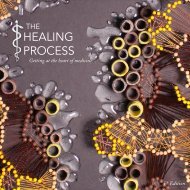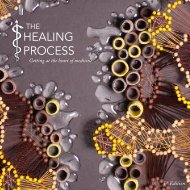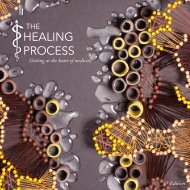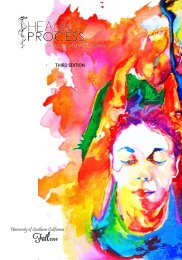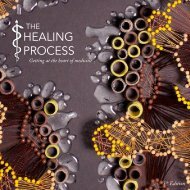final_thp_5thedition
You also want an ePaper? Increase the reach of your titles
YUMPU automatically turns print PDFs into web optimized ePapers that Google loves.
activity indicated that low-income students would be<br />
unable to learn as efficiently as their high-income<br />
counterparts. If people continue to draw erroneous,<br />
unsubstantiated conclusions from this type of misrepresented,<br />
media-blasted science, the general populace<br />
will ignore the golden rule of observational sciences:<br />
correlation is not causation. This core message loses<br />
its way to the general media-consuming public in light<br />
of dramatic, sensationalist headlines.<br />
mis•com•mu•ni•ca•tion<br />
During the transition from scientific discovery to<br />
public dissemination, when did people forget to mention<br />
that correlation does not mean causation in<br />
science? Regarded as one of the most important points<br />
of research dissemination, this reminder is repeatedly<br />
ignored in media portrayal of headline-worthy scientific<br />
discoveries. The Erika Hayasaki article featuring my<br />
principal investigator’s research even discussed such<br />
headlines, including “Poverty Shrinks Brains from<br />
Birth” and “Why Poor People Seem to Make Bad Decisions.”<br />
Interestingly, in his Atlantic article “The Point<br />
When Science Becomes Publicity,” James Hamblin<br />
writes that this responsibility lies with the original<br />
researchers themselves, rather than reporters and<br />
news outlets sharing the information.<br />
Hamblin interviews Petroc Sumner, a psychology<br />
professor at Cardiff University in Wales and the lead<br />
investigator of the concerned study. Sumner discusses<br />
the correlations (and does not imply causation) of<br />
well-conducted research being poorly represented in<br />
the media and exaggeration in press releases issued by<br />
researchers and universities. Researchers, Sumner told<br />
The Atlantic, have a responsibility to not sensationalize<br />
their own research in order to make it more consumer-friendly,<br />
but rather to present the research and its<br />
implications as faithfully as possible. Misinterpretations<br />
of correlation-based research implying causation<br />
not only distorts implications of observational<br />
research, but often leads to questionable medical<br />
advice or seemingly scientifically supported falsehoods<br />
PAGE | 9<br />
—things like “Sleeping on your stomach will litter your<br />
visage with angry red pustules” or “People are choosing<br />
marijuana over OxyContin for their recreational -<br />
high.”<br />
While intriguing, the idea that scientists sensationalize<br />
their own work and purposefully cause public misunderstanding<br />
is particularly disturbing. This is<br />
because once we claim things<br />
.<br />
like “Poor brains are not<br />
as smart,” we are paving the way for a “nouveau eugenics,”<br />
a term used by Matthew Hughey, a University of<br />
Connecticut professor of sociology, in Hayasaki’s cover<br />
story. Social neuroscience is the field of study dedicated<br />
to understanding the intersectionality between the<br />
brain and human social interaction. The implications<br />
of a misinformed social neuroscience nouveau eugenics<br />
movement are grand: they potentially support<br />
discrimination against already disadvantaged people,<br />
and they do so with an arsenal of scientific research<br />
which, to the layperson, could be misconstrued as<br />
evidence for their claims about inferiority of said<br />
disadvantaged people‘s brains.<br />
neu•ral dis•crim•i•na•tion<br />
In neuroscience, the “wiring” of the brain is a rather<br />
finicky process. Many analyses are made through the<br />
use of functional magnetic resonance images (fMRIs)<br />
which essentially highlight areas of higher blood flow<br />
in the brain, and consequently brain activity, of someone<br />
in a large brain scanner. This activity can be analyzed<br />
in real time and provides a visual approximation<br />
of participants’ brain activity.<br />
Neuroscientists believe synaptic connections are<br />
forged, pruned, and weeded over long-term exposure<br />
to certain people, places, and situations. In Immordino-Yang’s<br />
research, for example, fMRIs of younger adolescents’<br />
brains appear different from their own brains<br />
two years later, but in minutiae. Potentially significant<br />
minutiae—minutiae my lab certainly finds worth<br />
exploring, but minutiae nonetheless.<br />
When researchers’ press releases and media outlets



